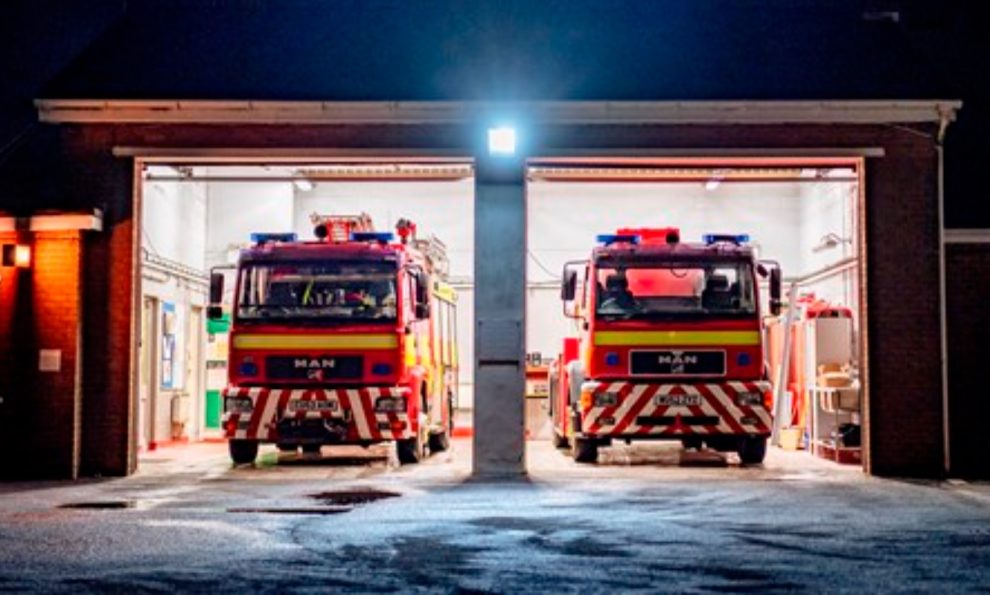A FIRE service whose budget rose by 17% last April has recruited more retained firefighters after concerns were repeatedly raised about a shortage of younger candidates joining up.
Roger Thomas, Mid and West Wales Fire and Rescue Service’s chief fire officer, had warned prior to the budget hike that not enough older retained – or on-call – firefighters were being replaced. These are trained, part-time volunteers who are paid for each incident they respond to.
Fire services have a mix of retained and full-time – or whole-time – firefighters, and in November 2022 Mr Thomas said the availability of retained firefighters in Mid and West Wales had dropped from 90-95% a few years ago to 83%. “That is a real area of concern for me,” he said. “In my view, it’s unsustainable.”
Something had to be done about this trend, which is not unique to Mid and West Wales – hence a significant budget rise from £53.8m to £63.2 million at the beginning of 2023-24.
But the hike caused consternation among the six councils in the Mid and West Wales area which fund the service through a levy, and there were calls for a new system of direct central government funding for what is an emergency service. Those calls have not abated after the fire service’s budget was increased to £68.5 million ahead of the 2024-25 financial year.
In answer to questions from the Local Democracy Reporting Service, Mid and West Wales Fire Service said it now had 673 retained firefighters compared to 659 when the budget was approved last year. The actual cover these retained firefighters provided was the equivalent of 566 full-timers compared to 563 full-timers last year. The lower increase in the full-time equivalent figure is because retained firefighters can commit to varying hours of service each month.
Meanwhile, whole-time firefighter numbers have increased from 409 last year to 416 in March this year.
Assistant chief fire officer Craig Flannery said just over 10% of the retained firefighter workforce was still above the retirement age of 55, highlighting its ageing profile.
“It is still early days as we set out to address a generational issue around the staffing of our on-call stations, and some of our improvements will take 12 to 36 months to embed,” he said.
Pay for retained and whole-time firefighters is set at a national level. It went up by 7% in July 2022 and by 5% in July 2023. This accounts for a chunk of the budget rise. Mr Flannery said Mid and West Wales Fire Service had introduced incentives of its own: extra pay for retained firefighters for training days, as sometimes they might have to take a pay cut by missing a day at their main job outside of firefighting; and a payment recognising every five years of service. Mr Flannery said the early feedback from retained firefighters was positive.
The work being carried out to recruit and retain is primarily to halt the decline in firefighter availability, while stabilising the duty system.
The next aim is to improve the service to the public with increased response capability, although the fire service said it was working on both aims at the same time.
Fire service budgets aren’t set by fire services themselves but a fire authority comprising councillors from the constituent local authorities. The Mid and West Wales Fire Authority has 25 councillors from Swansea, Neath Port Talbot, Carmarthenshire, Ceredigion, Powys and Pembrokeshire.
While councillors on a fire authority have a duty to maintain an effective fire service, large budget increases impact the finances of the councils they represent because of the levy.
Fire authority member and Carmarthenshire councillor Hugh Shephardson said there wasn’t a conflict of interest though. “When you sit on a fire authority you have to be satisfied that the budget is there to protect the community,” he said. “It’s a legal duty.”
At last year’s fire authority budget meeting, one councillor – Lyndon Jones, of Swansea – did vote against the 17.53% budget rise. The impact of the hike was that councils had to find extra money to fund their share of the fire service, and it became a political talking point.
The financial hit was softened slightly by the fact that the portion of the rise relating to employer pension costs was provided directly to councils from central government. And the fire service also dipped into its reserves to fund a grant that was being withdrawn.
The effect of this was that instead of paying 17.53% more, councils actually paid around 13% more. Although councils themselves got extra central government funding in 2023-24, this was still a significant rise, and local authorities had to make difficult choices about where the extra money came from. Equally, there have been years when fire service budget increases have been lower than those of councils, so there is an element of swings and roundabouts.
Swansea Council leader Rob Stewart said the fire service levy remained a chunk of expenditure that the council had to honour but did not have control over.
He backed a new model, like the one that funds police forces, whereby central government funds a share of each force and the rest is funded by council taxpayers directly via a precept. That precept appears separately on council tax bills.
Cllr Stewart said: “In my view it would be clearer what the council is raising for its own services, and what is being raised for the fire service and police.”
The Swansea Labour leader said he didn’t begrudge the fire service extra funding, it was how it was provided that he wanted to change.
If you’re one of the tens of thousands of council taxpayers in Swansea who’ve just received their bill for 2024-25, there is commentary about the fire service levy on the accompanying leaflet – and it’s highlighted in yellow in case you missed it first time round.
Carmarthenshire Council’s cabinet member for resources, Cllr Alun Lenny, said the current levy system seemed “archaic”, given it was the only one of three emergency services paid for by councils. “It strikes me as being rather perverse that an emergency service should be funded by local authorities,” he said.
The Welsh Government is considering a move away from the current system of council-funded fire services, but a spokeswoman said it would require the Senedd to pass new legislation. “So it is not likely to happen in the short term,” she said.
Mid and West Wales Fire Authority said it always took budget decisions with due regard for its constituent councils, and that budget plans were presented to them every year. A spokesman said: “If proposals for a precept model were brought forward, the fire authority would engage in the consultation.”
It goes without saying that if the model of funding were to change, the money needed by fire services would still have to come from somewhere.



















